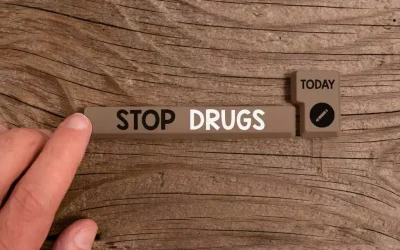Content
This reaction focuses on the drinker’s emotional response to an initial lapse and on the causes to which he or she attributes the lapse. People who attribute the lapse to their own personal failure are likely to experience guilt and negative emotions that can, in turn, lead to increased drinking as a further attempt to avoid or escape the feelings of guilt or failure. In contrast to the former group of people, the latter group realizes that one needs to “learn from one’s mistakes” and, thus, they may develop more effective ways to cope with similar trigger situations in the future. An early CBT approach to addictions is relapse prevention (RP; Marlatt, 1985). Because relapse is the most common outcome of treatment for addictions, it must be addressed, anticipated, and prepared for during treatment. The RP model views relapse not as a failure, but as part of the recovery process and an opportunity for learning.

Recontact contracts can also be useful where it is agreed in advance what the criterion will be for a time where a gambler should recontact the therapist. The guiding strategy here is to ensure that gamblers learn to cope with minor setbacks on their own but are able to recognise more major setbacks before they become fully blown relapses. A verbal or written contract will increase the chance that gamblers will recontact at an appropriate stage and therefore https://ecosoberhouse.com/ minimise the likelihood of a full blown relapse. In RP client and therapist are equal partners and the client is encouraged to actively contribute solutions for the problem. Client is taught that overcoming the problem behaviour is not about will power rather it has to do with skills acquisition. Another technique is that the road to abstinence is broken down to smaller achievable targets so that client can easily master the task enhancing self-efficacy.
‘This Time Will Be Different’
Marlatt (1985) describes an abstinence violation effect (AVE) that leads people to respond to any return to drug or alcohol use after a period of abstinence with despair and a sense of failure. By undermining confidence, these negative thoughts and feelings increase the likelihood that an isolated “lapse” will lead to a full-blown relapse. If, however, individuals view lapses as temporary setbacks or errors in the process of learning a new skill, they can renew their efforts to remain abstinent. Although specific intervention strategies can address the immediate determinants of relapse, it is also important to modify individual lifestyle factors and covert antecedents that can increase exposure or reduce resistance to high risk situations. Global self-control strategies are designed to modify the client’s lifestyle to increase balance as well as to identify and cope with covert antecedents of relapse (i.e., early warning signals, cognitive distortions, and relapse set-ups).
What are the different types of abstinence?
Two common ones are forced and voluntary. Voluntary abstinence refers to an individual actively choosing to stop taking the drug. Forced abstinence occurs when an individual is removed from the drug environment.
The counselor should ask for comments from all clients on the issue being discussed, especially if particular group members have coped with the issue. For example, clients who have moved beyond the protracted abstinence period could be asked to describe how they handled problems they encountered during that time. The counselor should not, however, relinquish control of the group or promote directionless crosstalk about how each person feels about what the others have said.
Cognitive Behavioral Treatments for Substance Use Disorders
Recent research suggests that willpower might not be all we thought. But the journey to abstinence involves more than one single decision. The initial transgression of problem behaviour after a quit attempt is defined as a “lapse,” which could eventually lead to continued transgressions to a level that is similar to before quitting and is defined as a “relapse”. Another possible outcome of a lapse is that the client may manage to abstain and thus continue to go forward in the path of positive change, “prolapse”4. Many researchers define relapse as a process rather than as a discrete event and thus attempt to characterize the factors contributing to relapse3.
In a prospective study among both men and women being treated for alcohol dependence using the Situational Confidence Questionnaire, higher self-efficacy scores were correlated to a longer interval for relapse to alcohol use8. The relationship between self-efficacy and relapse is possibly bidirectional, meaning that individuals who are more successful report greater self-efficacy and individuals who have lapsed report lower self-efficacy4. Chronic stressors may also overlap between self-efficacy and other areas abstinence violation effect of intrapersonal determinants, like emotional states, by presenting more adaptational strain on the treatment-seeking client4. Assessing a client’s existing coping skills can be a challenging task. Questionnaires such as the situational confidence test (Annis 1982b) can assess the amount of self-efficacy a person has in coping with drinkingrisk situations. Those measures do not necessarily indicate, however, whether a client is actually able or willing to use his or her coping skills in a high-risk situation.
How To Define The Abstinence Model
Furthermore, 12-step programs often celebrate abstinence milestones and encourage participants to count abstinent days, leading to a perception that someone who resumes substance use is “going back to the beginning” and has not made progress in recovery. The important thing to consider is that the hardest drug addiction to recover from is the one that you suffer from. The actual statistics on relapse for other drugs have little to do with one’s personal recovery program.
Although the benefits of 12-step participation may (and quite often do) outweigh the added AVE risk, clinicians should be aware of this particular risk and take steps to counteract it.
What Does It Mean to Relapse?
Mark’s goal is to provide a safe environment where distractions are minimized, and treatment is the primary focus for clients and staff alike. Mark received a bachelor’s degree in Business Administration, with a minor in Economics from the University of Rhode Island. He is a licensed residential home inspector in the state of Florida and relates his unique experience of analyzing a property and/or housing condition to determining any necessary course of action at our facility. Substance use recovery programs should refrain from defining a mere slip as a total failure of abstinence. Instead, they should promote the notion that slips should be addressed immediately and that individuals can learn from them and improve. This does not mean endorsing slips, but recognizing that if they occur, something needs to be done immediately.
Unfortunately, a single lapse can cause you to fall into a full relapse because of something called the abstinence violation effect (AVE). It is not necessarily a failure of self-control nor a permanent failure to abstain from using a substance of abuse. Those in addiction treatment or contemplating treatment can benefit from this aspect of relapse prevention.
A critical difference exists between the first violation of the abstinence goal (i.e., an initial lapse) and a return to uncontrolled drinking or abandonment of the abstinence goal (i.e., a full-blown relapse). Although research with various addictive behaviors has indicated that a lapse greatly increases the risk of eventual relapse, the progression from lapse to relapse is not inevitable. Although abstinence from all substances is an excellent recovery goal for some, research consistently shows that many people who resolve alcohol and drug problems follow a path of moderation.
- The myths related to substance use can be elicited by exploring the outcome expectancies as well as the cultural background of the client.
- These factors can lead to initial alcohol use (i.e., a lapse), which can induce an abstinence violation effect that, in turn, influences the risk of progressing to a full relapse.
- A review of the state of the profession provides context for the field’s myriad licenses and certifications and educational levels of clinicians.
The verdict is strongest for interventions focused on identifying and resolving tempting situations, as most studies were concerned with these24. Along with 12-Step or other mutual-help meetings, the RP group is the most consistent element of Matrix treatment. Each of the initial 16 weeks of treatment features an RP group meeting on Monday and Friday. The frequency and intensity of these group meetings foster interdependence among clients. The resulting bonding and cohesion can support and motivate clients and help sustain treatment involvement.
Many clients may never need to use their lapse-management plan, but adequate preparation can greatly lessen the harm if a lapse does occur. Questionnaires such as the situational confidence test (Annis 1982b) can assess the amount of self-efficacy a person has in coping with drinking-risk situations. The desire for immediate gratification can take many forms, and some people may experience it as a craving or urge to use alcohol. Although many researchers and clinicians consider urges and cravings primarily physiological states, the RP model proposes that both urges and cravings are precipitated by psychological or environmental stimuli. Ongoing cravings, in turn, may erode the client’s commitment to maintaining abstinence as his or her desire for immediate gratification increases. This process may lead to a relapse setup or increase the client’s vulnerability to unanticipated high-risk situations.
